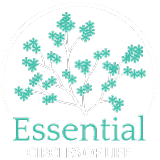Acupuncture
Acupuncture is a medicine that utilizes the use of needles to regulate the body’s life-force (Ki) pathways, also known as Meridians. This ki life-force flows throughout the body, via the meridians (channels), nourishing the spirit and the body as a whole. Dis-ease occurs when the ki flow becomes disrupted and no longer flows through the channels harmoniously. Therefore, the objective of acupuncture is to bring about a state of harmony, also known as homeostasis, back to the mind, body and spirit of the patient so that we may interact within our environment in a harmonious way.
Japanese Meridian Therapy or Hari, is a system of acupuncture that is deeply rooted in the Chinese Acupuncture Classics that date back over 2000 years. It utilizes the tools of pulse feedback and abdominal (hara) palpation in order to make an accurate diagnosis and to observe the changes that occur during treatment. Diagnosis is made using the 5 element cycle and the flow of Ki (energy) from each organ system to the next, i.e. The 5 phases.
During treatment, the Japanese Meridian Therapy practitioner focuses more on adjusting the flow of ki within the channels as opposed to approaching disease only by treating points related to symptoms. Pattern discrimination based on interpretations of the pulse give the practitioner the ability to choose the points that will best facilitate the healing process. By focusing on adjusting the flow of ki, the practitioner can see the reflection of change within the pulse during each stage of the treatment and therefore increase their ability to give a more precise treatment. This procedure is called the “root treatment” and is the main focus of the acupuncture treatment.
Japanese Meridian Therapy is a very gentle, non-aggressive approach to acupuncture that leaves most patients feeling a deep sense of relaxation. It is very beneficial for most people but especially those who are sensitive or have fear of needles.
Pediatric Acupuncture or Shonishin is a painless form of acupuncture originally used in Japan that doesn’t involve the use of acupuncture needles that penetrate the skin. Instead, there are many small tools that can affect the abundant Ki flow of a child while yielding good results. Since most children are afraid of needles, this usually allows the practitioner the ability to perform a treatment on a child and allows for a more relaxed environment without the fear or conflict that can be experienced in a typical medical setting. Shonishin is usually the preferred method to treat children up to the age of puberty before transitioning to a modified “adult” acupuncture treatment.
Acupuncture Procedure:
Treatment:
• Needling: The typical procedure that I follow in treating adults involves using an ultra-thin silver needle to “touch” the point. This is called the root treatment and comprises the main objective of the treatment. It’s goal is to bring balance back to the yin organs (Lung, Spleen, Liver and Kidney) while harmonizing the flow of Ki between the yin and yang channels of the body. There is no needle penetration involved in this process and it is a pain-free approach to acupuncture.
• Root Treatment: The root treatment begins after the sho or imbalance is determined through the methods listed above. Points are then chosen based on their relation to the 5 elements attributed to the organs of the body. Supplementary points are also used with minimal insertion (2-3mm) of ultra-thin needles at various points to support the root treatment. However, in some instances deeper needling may be needed to treat certain conditions in order to accentuate the efficacy of the root treatment.
• Cupping Therapy: Cupping therapy is a useful addition to the treatment of chronic conditions like pain and asthma as well as acute sprains, injuries or the common cold.
